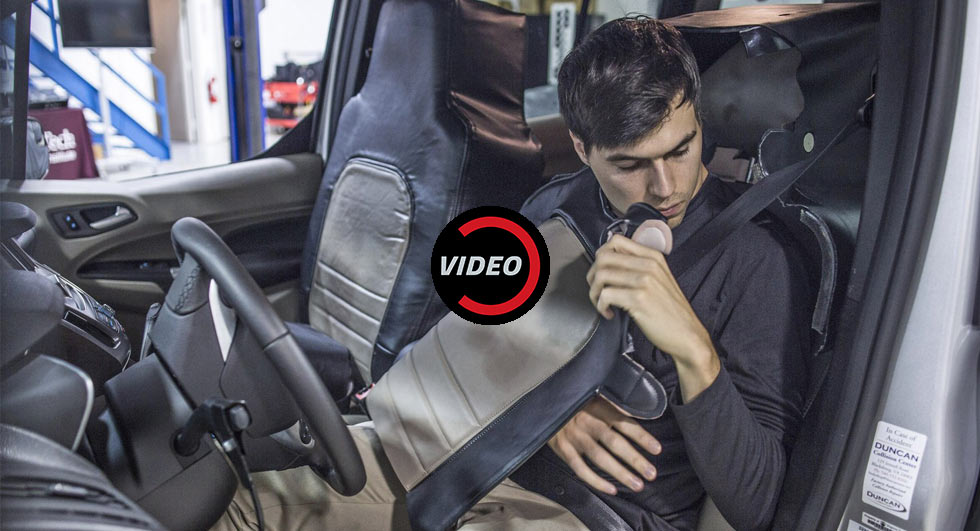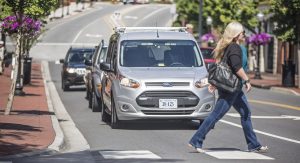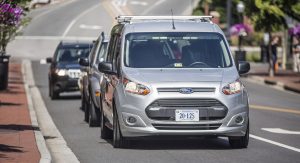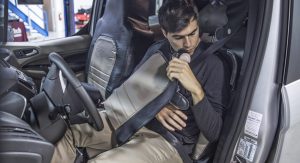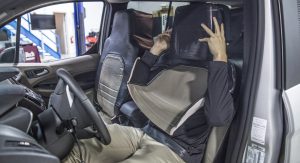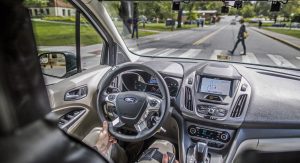The world’s worst Transformer has returned as Ford has revealed it was behind the bizarre ‘car seat guy’ incident in Arlington, Virginia.
For those who don’t remember, a local news team caught up with what they thought was an autonomous Ford Transit Connect. However when reporter Adam Tuss approached the van, he soon discovered it was being driven by a guy disguised as a car seat. He was caught off guard and ended up saying “What are you doing? I’m with the news, dude. Dude!”
That seemed to be the end of the story but Ford has now confirmed the incident was part of a test they were conducting to communicate a “vehicle’s intent by soliciting real-world reactions to a self-driving car on public roads.”
As Ford explains, drivers can simply nod or wave at a pedestrian to let them know it is okay to cross the street. Since autonomous vehicles don’t have a driver, this eliminates that simple form of communication.
Ford considered multiple ways to communicate a vehicle’s intent but ideas such as symbols and a text display were rejected for various reasons. The company eventually decided to go with lighting signals since braking and turning indications are already standardized and widely understood.
In order to test the system, Ford equipped a non-autonomous Transit Connect with a light bar. The Virginia Tech Transportation Institute team then developed a “seat suit” to help conceal the driver and make people believe the vehicle was fully autonomous so Ford could evaluate their encounters with the van.
Ford probably wasn’t expecting to make the news but they developed a system were two white lights move side to side to indicate vehicle is about to come to a stop. A solid white light indicates the vehicle is driving autonomously and rapidly blinking lights indicate the vehicle is beginning to accelerate from a stop.
Ford record over 150 hours of data from test and says the information will be “valuable to understanding if other road users change their behaviors in response to self-driving vehicles and the signals they employ.” The company went on to explain the test is part of a larger goal of creating an industry standard for visual communications for autonomous vehicles.




